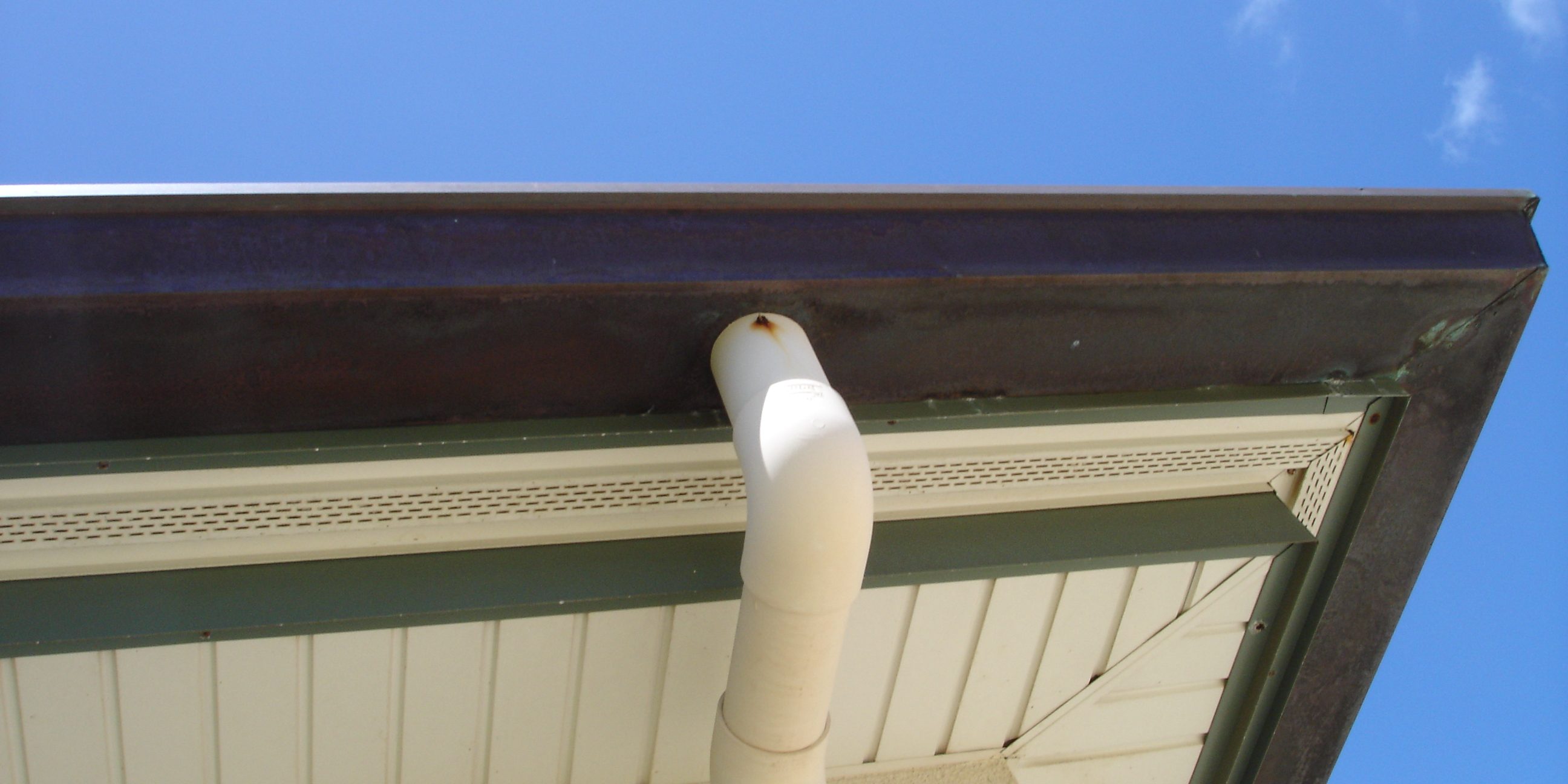Guttering is often the unsung hero in the tale of home construction. Correctly installed and functioning gutters will do more than just keep rain from pouring off your roof. Your home’s guttering provides an effective barrier, which prevents rain water from leaking from the drip edge of your roof into other structures.
However, incorrectly installed gutters may not be up to doing the job required of them. Gutters must slope (or “pitch”) in order to efficient drain water towards the downpipe. If water flows in any direction other than towards the downpipe, the gutter has not been correctly installed.
Suitable fixtures must be used in the installation of guttering, providing adequate support for both guttering and downpipes. The structures to which guttering and downpipes are affixed should also be able to bear weight and stress of the system.
Pitch and Water Flow
When water flow is not controlled, there are a number of potential problems that can arise. Overflow can cause damage to siding and stain brickwork. When water is allowed to spill out onto gardens, paths, and other interior structures, there is an increased risk of erosion and flooding in the lower levels of the property.
By dropping the slope of guttering by an inch roughly every ten feet, water is allowed to easily flow to the downpipe. The pitch will also help prevent debris from building up in your gutters as free flowing water will provide a natural vehicle moving dirt, leaves and similar obstructions.
You can test the pitch to see how efficiently water flows to the downpipe. While positioning guttering, simply use a hose to directly water along the gutter towards the downpipe. Keep the water pressure low to mimic the behaviour of rain; otherwise you won’t get an accurate indication of the effectiveness of the pitch.
Effective Downpipes
Downpipes play as large a role in effective guttering as the guttering itself. The purpose of downpipes is to direct water from guttering away from nearby structures. Where possible, downpipes should extend away from structural foundations. This can be achieved through the use of a downpipe extension, or a connection to street gutters through a system beneath the ground.
It is also important to protect the downpipe as damage can cause debris to gather inside the pipe, resulting in an obstruction. By extension, damage to a downpipe increase the risk of damage to your property. Therefore it is worth considering paying the extra to have downpipe guards installed.
Downpipe guards add an extra layer of protection to your guttering and downpipes. Filters placed over the inlet of downpipes, which originates at the guttering, will help prevent debris from infiltrating the downpipe. A guard which runs the length of the downpipe will bear the brunt of most accidental bumps, while the actual downpipe remains safe from damage.
Keep Gutters Clean
While installing guttering correctly will help ensure a long lasting system, cleaning and maintenance is still important. Cleaning your gutters and performing water flow checks at least twice a year is recommended. However, if there is a higher risk of debris getting into guttering from nearby trees etc, cleaning and maintenance should take place every three to four months.
When cleaning gutters, exercise care not to damage the system. Obviously it is not a good idea to lean ladders against your gutters as you could bend or warp the gutter. Carefully remove debris from gutters to avoid damage or inadvertently forcing debris into the downpipe. Never use corrosive cleaning products on gutters as they can destroy seals and leave your gutters vulnerable to rust or decay.
With proper installation and frequent cleaning you can expect your guttering system to last twenty-thirty years.





